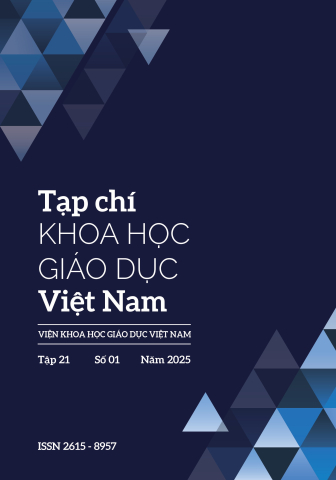[1] Trần Kiểm, (2012), Tiếp cận hiện đại trong quản lí giáo dục, NXB Đại học Sư phạm, Hà Nội
[2] Báo cáo phát triển kinh tế - xã hội 5 năm 2015 - 2020 tỉnh Lào Cai, (2020).
[3] Hồ Chí Minh, (2011), Toàn tập, tập 11, NXB Chính trị Quốc gia - Sự thật, Hà Nội, tr.94, 95, 96.
[4] Brophy, J.E., and Good, T.L, (1986), Teacher behavior and student achievement, In M.C. Wittrock (Ed.), Handbook of research on teaching (3rd ed., pp 328- 375), New York: Macmillan.
[5] Krathwohl, D.R, (1998), Methods of educational and social science research: An inte-grated approach, New York: Longman.
[6] Lass, G.V., Cahen, L.S., Smith, M.L., and Filby, N.N, (1982), School class size: Research and policy, Beverly Hills, CA: Sage
[7] Levy, F., and Murnane, R.J, (2004), The new division of labor: How computers are creating the next job market, Princeton, NJ: Princeton University Press.
[8] National Research Council, (2007a), Taking science to school: Learning and teaching science in grades K-8, Washington, DC: The National Academies Press
[9] Yael Friedler & Pinchas Tamir, (2010), Teaching basic concepts of scientific research to high school students, p.263-269, Publishedonline: 13 Dec 2010, https://doi.or g/10.1080/00219266.1986.9654837


